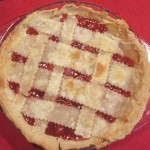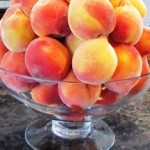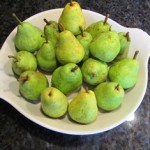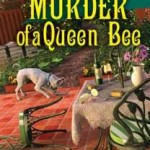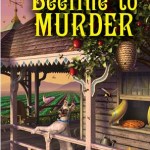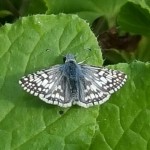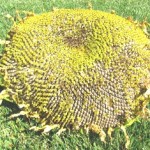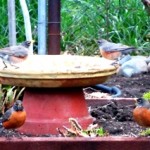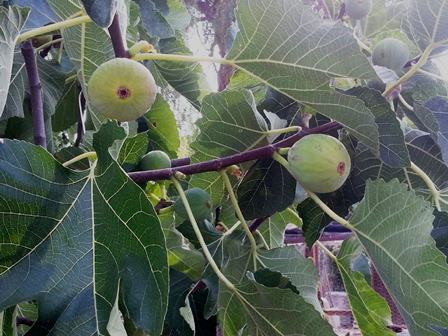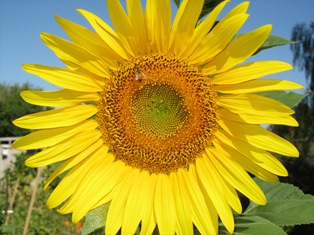Swimming in Fruit
Our cherry trees became so heavily laden with fruit this year I couldn’t work fast enough to make the fruit into cookies and pies and jars of jam, conserve, and chutney.
What fruit the birds and squirrels didn’t devour ended up drying on the trees and looking like ornaments. I’m heartened that at least the wildlife will have something to forage on through fall and winter.
The apricot trees did a massive drop of their fruit and seemingly all at once. I made more jam than we’ll probably eat, dried some, and gave away more than a few full buckets of cots to neighbors and friends. I also had to do a messy cleanup of fruit on the ground.
In the cycle now are the summer peaches; so, here I go again . . swimming in fruit.
Next year, I’m going to get my act together early with teams of backyard pickers who can help me remove the fruit, divide it, and distribute it. Right now, however, I’ve got peaches to pick and preserve. The summer pears and figs will be next.
I’m not complaining; I’m enthralled that all this bounty is due to the work of our industrious little honeybees. All this fruit and I haven’t even mentioned finding time to harvest honey. Yet, the bees don’t stop, so neither will I.
________________________________________________________________
If you enjoy reading about farmette topics like keeping bees and chickens, caring for an orchard, or growing heirloom herbs and vegetables, check out my mystery series from Kensington Publishing (due out September 26, 2017).
These novels feature a whodunnit for you to solve and are filled with farming facts, trivia, and delicious recipes. The novels and my other books are available in traditional and online bookstores everywhere. See, http://tinyurl.com/yb42zd2d
Plant for the Pollinators
I seldom need an occasion to put in another bed of flowers, but this is National Pollinator Week. I think a new bed is in order to attract local bees, birds, bats, and butterflies–all considered pollinators. Having these small creatures around benefits landscapes, gardens, and orchards.
The U.S. Fish and Wildlife Service has noted that over 75 percent of our plants are pollinated by birds, animals, and insects. We can help ensure these creatures will be around for a long time if we restore their habitats and ensure they have food and water.
There are many lovely plants you can grow that don’t require a lot of care.
- lavender
- bee balm
- echinacea
- sage
- cilantro
- thyme
- sunflowers
- sweet alyssum
- anemone
- borage
- geraniums
- scented pelargoniums
- mint
A tapestry of colorful herbs and flowers beautifies your landscape and pollinators love the diversity. If you don’t have a lot of space, grow some of these plants in planter boxes, clay pots, or other types of containers.
Put in a water feature, too, such as a table-top or larger fountain that recycles water. Even a pottery saucer filled each day can attract pollinators.
It won’t take long for the bees and hummingbirds to find the water. Their frequent visits are fun to watch, and they’ll likely be sipping throughout the day.
_________________________________________________________________________
If you enjoy reading about farmette topics, check out my Henny Penny Farmette series of cozy mysteries from Kensington Publishing. My newest novel includes delicious recipes, tips on keeping bees and chickens, and much more. Click on this URL for more information, http://tinyurl.com/ya5vhhpm
.
What’s Not to Love about Edible Figs?
Many backyard gardeners start checking their fig trees this time of year for ripe fruit. Most figs grown for their fruit bear two crops a year (spring and fall). When figs are ripe, the globular fruit becomes soft and hangs downward from the branch. This fruit will not ripen on the windowsill or in a paper bag, so picking fruit while it is still firm is not advised.
I grow White Genoa, Adriatic, and Brown Turkey figs on my farmette. One of my nearest neighbors grows the Mission fig, which is a very large tree taking up most of his backyard. This time of year, his tree is heavily laden with purple-black fruit. Throughout the fall, that Mission fig tree is frequently visited by the birds, squirrels, and raccoons that eat the fruit.
Cooks appreciate the versatility of figs for cooking. There are many ways to prepare them. Grilled figs are delicious when served on a crostini with a dollop of goat cheese and drizzled with honey. The pulp can be used to make fig bars and other types of cookies. Luscious, juicy figs may be made into chutney or jam, baked in cakes, paired with almonds in a tart, sliced into salads, grilled with lamb, or served simply with port.
Fig trees are easy to grow, too. They need full sun and good drainage; many cultivars are drought tolerant. Lightly prune as necessary in winter. Enjoy.
* * *
If you enjoy reading about farmette topics (including gardening, beekeeping, and delicious recipes), check out my cozy mysteries A BEELINE TO MURDER and also THE MURDER OF A QUEEN BEE in the Henny Penny Farmette series (from Kensington Publishing).
These novels are available through online retailers such as Amazon, Barnes & Noble, Kobo Books, and Walmart as well as from traditional bookstores everywhere.
See, http://tinyurl.com/hxy3s8q
Now available in mass market paperback, this debut novel launched the Henny Penny Farmette series of mysteries and sold out its first press run.
See, http://tinyurl.com/h4kou4g
The second cozy mystery in the Henny Penny Farmette series, available Sept. 27, 2016, is now available on Net Galley (netgalley.com) for professionals and readers who write reviews.
Giant Sunflowers Brighten a Garden, Cornfield, or Wall
Ralph Waldo Emerson once observed, “The earth laughs in flowers.” Among the many flowers I plant around the Henny Penny Farmette each year, sunflowers are my favorites.
What’s not to love about these gorgeous beauties that inspired master artists like Van Gogh, Monet, and Gauguin as well as farmers like my grandmother who put them in fruit jars and crockery to brighten the rooms of her Missouri farmhouse?
I like to grow smaller ones at the back of a flower bed and the giant ones against walls or at the back of my patch of summer corn.

These sunflowers stand about 12 feet tall and produce several heads. Heritage varieties produce several heads.
Giant sunflowers need space to grow to full size since they will grow well over six feet. In my garden, they tower over the corn. Bees love them for their pollen. Kids love them when the foliage of the plants create a secret fort or a fairy circle. Humans, birds, and squirrels love them for their seeds.
For best results, plant giant sunflowers at the back of a garden. They need good soil and full sun. Plant when the danger of frost has past. A rule of thumb to follow is to plant them about one inch deep and six inches apart. While the seeds are germinating, keep the soil moist.
Later on, when the plants stand about three inches tall, you can thin them. Leave about one foot between each plant. This enables a strong root system for form. The stalks will become sturdy and measure about three to four inches in circumference when fully grown.
First come the gorgeous petals in green to yellow and then bright yellow. As the bees pollinate the florets and they drop, the seeds will mature. Seeds are either gray or brown in color.
I always cut the heads when the seeds are plump, firm, and begin to drop. I let the heads dry well in the sun for days before I remove the seeds. Fully dry seeds can be stored in containers for human consumption or to be fed to the squirrels and birds. Don’t forget to save some for planting in next year’s garden.
* * *
If you enjoy reading about farmette topics (including gardening, beekeeping, and delicious recipes), check out my cozy mysteries A BEELINE TO MURDER and also THE MURDER OF A QUEEN BEE in the Henny Penny Farmette series (from Kensington Publishing).
These novels are available through online retailers such as Amazon, Barnes & Noble, Kobo Books, and Walmart as well as from traditional bookstores everywhere.
See, http://tinyurl.com/hxy3s8q
Now available in mass market paperback, this debut novel launched the Henny Penny Farmette series of mysteries and sold out its first press run.
See, http://tinyurl.com/h4kou4g
The second cozy mystery in the Henny Penny Farmette series, available Sept. 27, 2016, is now available on Net Galley (netgalley.com) for professionals and readers who write reviews.
Growing and Sharing Farmette Figs
It’s that time of year when our fig trees reward us with a second crop of sweet, juicy fruit, best eaten right from the tree.
We aren’t the only ones who love to eat figs. The birds and raccoons are leaving telltale marks that they’re helping us devour this sweet fruit. And it’s no wonder.
Figs are a nutrient-rich food with antioxidant properties. They contain magnesium, vitamin B6, fiber, and beneficial amounts of calcium and iron.
We grow a couple of varieties of figs on the farmette–a White Genoa and Brown Turkey. Our neighbors also have towering fig tree with a canopy that reaches over the neighbor’s house. The tree is loaded now with baseball-size, dark purple fruit. I believe it’s a Black Mission fig, introduced into California by Father Junipero Serra who planted them in 1769 at the San Diego mission.
Our Brown Turkey fig produces a crop twice each year. The first crop, known as the breba grows on last season’s wood. The second, and more abundant crop, grows on new wood.The fig has rose-colored flesh inside a brownish-purple skin that tends to crack open with the fig is overripe.
The White Genoa is self-fruitful and has yellow-green skin with strawberry-colored pulp. The taste is mild and sweet and can be enjoyed as fresh fruit or paired with tangy goat cheese. The tree bears two crops each year and benefits from a vigorous pruning in the autumn after the figs are harvested.
Both figs will lose their leaves, leaving only their bark color and scaffolding as winter interest in the garden. The White Genoa’s bark is light gray whereas the Brown Turkey has a darker shade of grayish-brown bark.
These trees can be grown in containers and kept to about six feet tall for people who don’t have a lot of space for a tree that can otherwise reach 15 to 20 feet.
Figs aren’t fussy about soil, but won’t tolerate excessive water. They like the sun and are pretty hardy here in Northern California. Many figs are self-fruitful, but keeping bees means I have pollinators to help the fig crops along.
Collecting and Storing Sunflower Seeds for Next Year’s Garden
Drying heads of sunflowers and storing the seeds is easy. If your sunflowers have dry heads, ranging in size from saucers to large dinner plates, and they have turned brown and most of the petals have fallen off, the seeds are ready for harvesting.
Simply place a paper bag over the drying head and band it or tie with string to keep the birds and squirrels from foraging. Trust me, they’ll eat all your seeds if you permit it. The bag keeps the seed from dropping onto the ground to be foraged by wildlife or to generate new plants.
I like to the cut off the head, leaving eight or so inches of stem on it. This way, there is stem to tie and hang so that the head is positioned upside down in a bag. This position can facilitate the drying and captures all the seed while hanging in a drying shed. Retain this bag of seeds for replanting. The seeds are how the sunflower reproduces itself. Sunflower heads can hold thousands of seeds, depending on the size.
A word of caution here: don’t harvest the seeds and leave them drying in a tray in your shed the way I did. That will attract rodents. A coffee can with a plastic lid works great for storing sunflower seeds.
The best seeds for snacking are the gray and white striped sunflowers. There are other types of seed–for example, a black one and grayish-white seed, but the striped seeds are delicious. After you chew open the hull and spit it out, there’s a lovely seed inside it that tastes great and is nutritious.
Giant Sunflowers Provide Food and Fun for Everyone
Giant sunflowers need space to grow to full size; they can reach six or more feet tall. Bees love them for their pollen. Kids love them when the foliage of the plants create a secret fort or a fairy circle. Humans, birds, and squirrels love them for their seeds.
For best results, plant giant sunflowers at the back of a garden. They need good soil and full sun. Plant when the danger of frost has past. A rule of thumb to follow is to plant them about one inch deep and six inches apart. While the seeds are germinating, keep the soil moist.
Later on, when the plants stand about three inches tall, you can begin to thin them. Leave about one foot between each plant. This can enable a strong root system for form. The stalks will become sturdy and measure about three to four inches in circumference when fully grown.
First come the gorgeous petals in green to yellow and then bright yellow. As the bees pollinate the florets and they drop, the seeds will mature. Seeds are either gray or brown in color.
I always cut the heads when the seeds are plump, firm, and begin to drop. I let the heads dry well in the sun for days before I remove the seeds. Fully dry seeds can be stored in containers for human consumption or to be fed to the squirrels and birds.
* * *
If you enjoy reading about farmette topics (including gardening, beekeeping, and delicious recipes), check out my cozy mysteries A BEELINE TO MURDER and also THE MURDER OF A QUEEN BEE in the Henny Penny Farmette series (from Kensington Publishing).
These novels are available through online retailers such as Amazon, Barnes & Noble, Kobo Books, and Walmart as well as from traditional bookstores everywhere.
See, http://tinyurl.com/hxy3s8q
Now available in mass market paperback, this debut novel launched the Henny Penny Farmette series of mysteries and sold out its first press run.
See, http://tinyurl.com/h4kou4g
The second cozy mystery in the Henny Penny Farmette series, available Sept. 27, 2016
Drastic Measures to Keep the Woodpecker Away
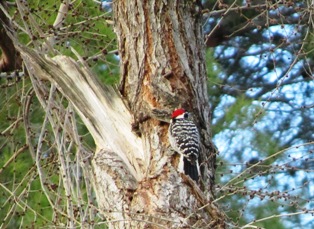
This lovely Nuttall’s Woodpecker has returned this year, perhaps to watch its offspring peck away at our roof strut
It’s been a week of rat-ta-tat-tat-tating and I’m growing wearing of hearing it. The woodpecker’s sound ordinarily doesn’t bother me, except I know it is pecking the foam, widening the hole of an exterior beam supporting the roof of this old house.
While my husband is away visiting relatives and I’m trying to keep the place tidy, the woodpecker isn’t going along with the plan. It is making a mess on the porch that rivals the squirrels’ messes when nuts are in season.
The bird has pecked wood shavings that fall into a pile on the porch. Worse, it is also pecking out the dry foam that we sprayed into the holes. Stopping the woodpecker’s assault against our beam forced me to take drastic measures.
When I heard the pecking this morning, I circled around the back of the house and sneaked along the side to catch the bird in the act. Seeing me, it took cover in the nearby elm tree.
From the bird’s size, I believe it to be either a female or a juvenile Nuttall’s woodpecker. We had one here last year that I photographed high in the pine tree. See http://www.allaboutbirds.org/guide/Nuttalls_Woodpecker/id
The solution, I think, might be a screen I found in a frame that clamps nicely over the two holes. Since securing the metal in place with screws, I haven’t heard a single rat-ta-tat-tat . . . not even in the nearby pine or the elm trees.
Harvesting and Saving Sunflower Seed for Replanting
Last year, my sunflowers were gigantic and gorgeous. I removed heads as large as dinner plates for drying so I could plant the seeds again this year. Some of the smaller heads contained seeds that were totally black. I figured the bees had done some magic with cross pollination of other sunflowers from the neighborhood.
I stored the heads in my garden shed over the winter, but never got around to removing the seed for replanting. When I went into the shed to retrieve them for planting last month, I discovered with dismay that something had devoured most of the seeds. A few seeds were left so I optimistically tucked them into the ground. Alas, none germinated.
Determined not to let that ever happen again, I recently bought four packets of open-pollinated, heirloom sunflower seed. After they grow, I’ll harvest and preserve the seed correctly at the end of summer so I’ll have plenty to plant next year. When you use open-pollinated, heirloom seed, next year’s plants will come true to the characteristics of the parent. This is not the case, however, with hybrid seed.
In case you might be interested in harvesting and storing sunflower seeds, too, here are the steps.
1. When the sunflower heads have turned from green to brown, remove the head from the stalk with a knife.
2. Let the head dry for a few weeks to a month in a dry place, safe from marauding squirrels and racoons. You can tie the heads with string and hang them from the ceiling in a drying shed or place them on paper.
3. Shake or gently bang or otherwise extract the seed onto paper from the dried heads.
4. Store the seed in paper envelopes and label them with the date and type of seed.
 Facebook
Facebook Goodreads
Goodreads LinkedIn
LinkedIn Meera Lester
Meera Lester Twitter
Twitter



